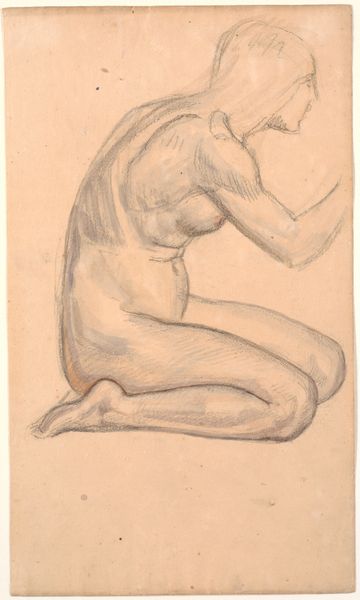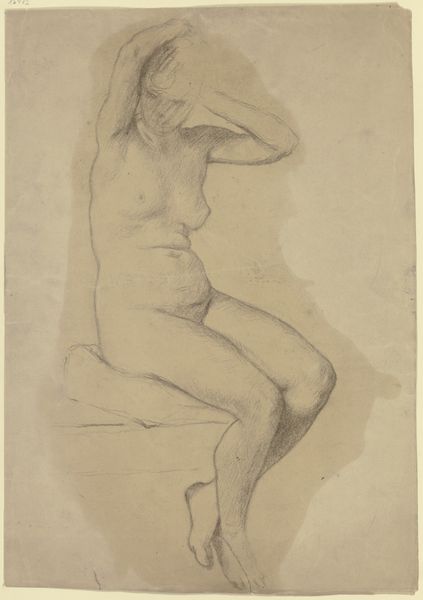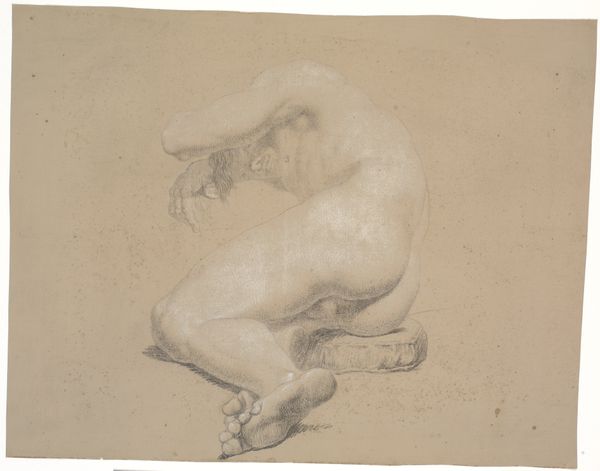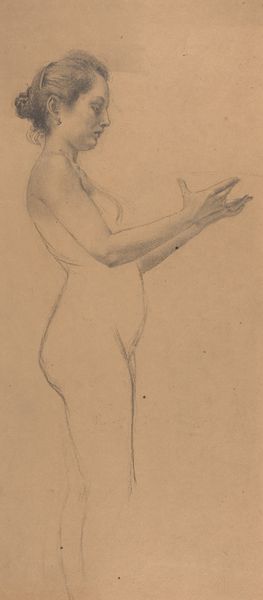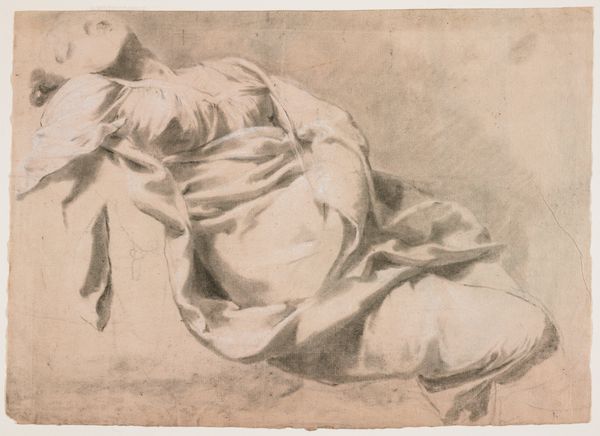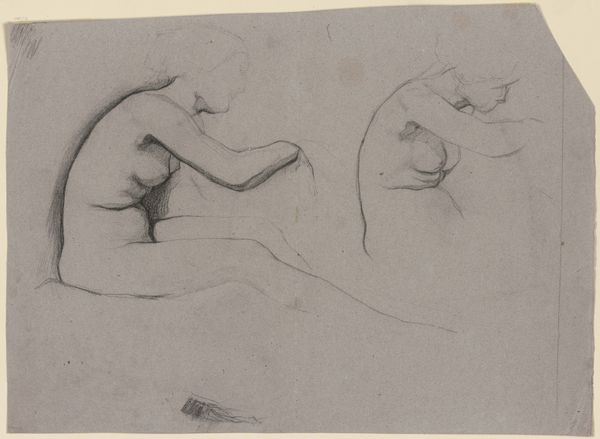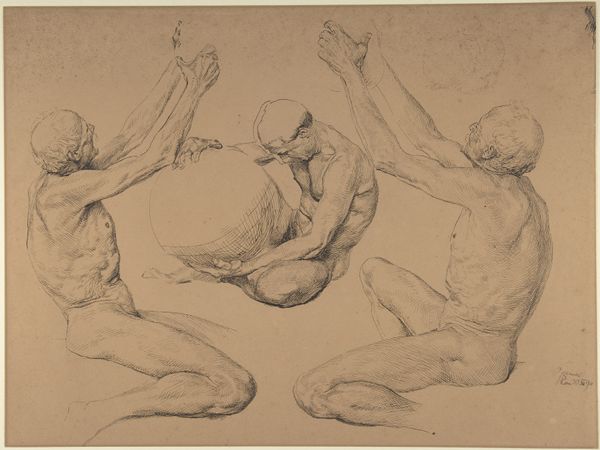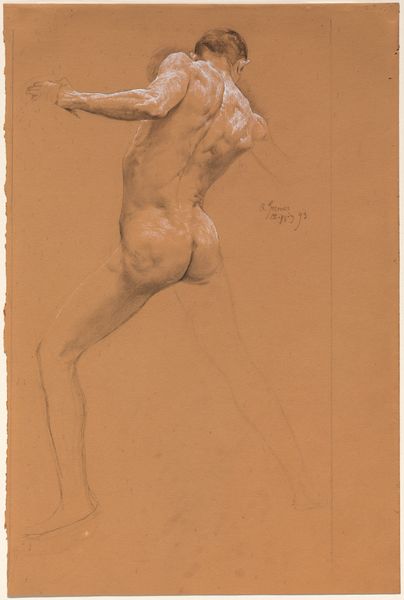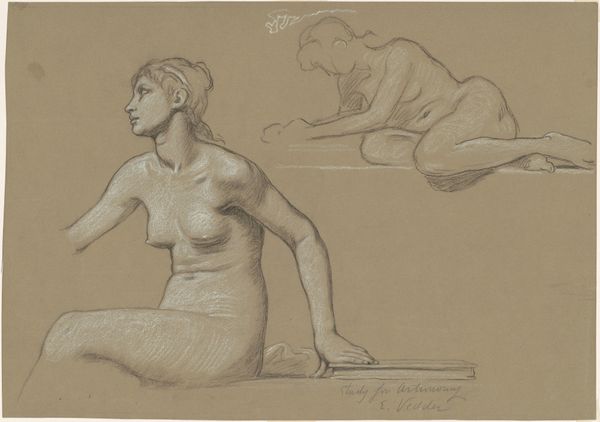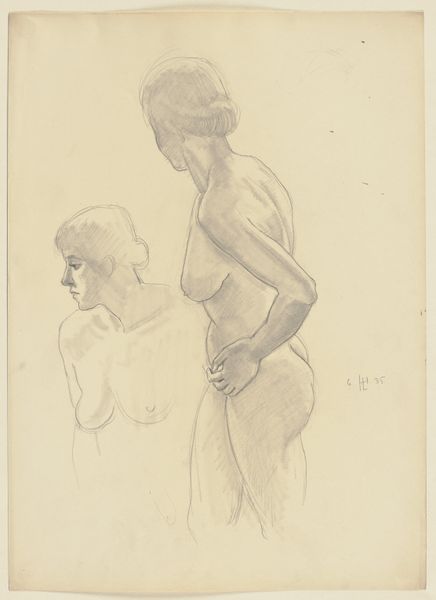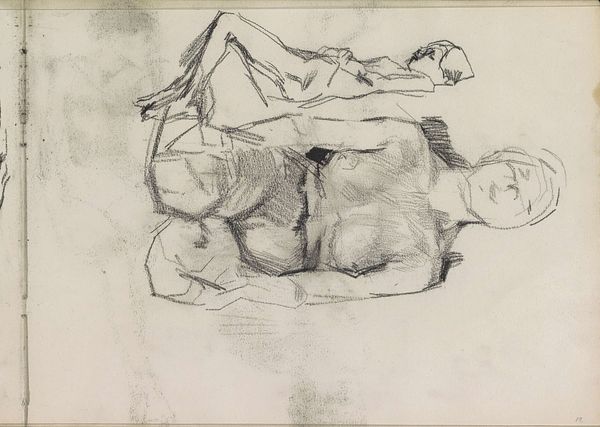
drawing, pencil
#
drawing
#
classical-realism
#
charcoal drawing
#
figuration
#
romanticism
#
pencil
#
nude
Dimensions: sheet: 21.8 x 28.2 cm (8 9/16 x 11 1/8 in.)
Copyright: National Gallery of Art: CC0 1.0
Editor: This is “A Seated Man Nude and then Clothed,” a pencil and charcoal drawing from the 1820s by Gustav Heinrich Naeke. It looks like two studies of the same man, one nude and one partially clothed. It gives a sense of academic figure study. How do you interpret the social and institutional context of a drawing like this? Curator: Well, consider the period. Early 19th century. Academic art training was deeply rooted in classical ideals and the representation of the human form. The nude study was a fundamental component, often seen as a demonstration of skill and understanding of anatomy. But, more importantly, what societal function did idealized nudes like these provide? Editor: Maybe showing the…potential…of the human body? As an aspirational symbol? Curator: Precisely. Now, why do you think Naeke juxtaposes the nude figure with the clothed one? What statement might he be making about societal expectations or artistic conventions? Editor: Hmm…is he contrasting the idealized form with everyday life, the real world constraints? A tension between naturalness and social performance? Curator: Exactly. It reflects Romanticism’s engagement with social issues and self-perception. Do you see how it may challenge ideas on who this artwork was designed to engage with or attract, perhaps also who it may ostracize, as well? Editor: That’s a lot to consider. I hadn't thought about who it excludes by only valorizing certain body types, too. Curator: It's essential to analyze art through its public role and the political implications of imagery, especially in the context of its creation and reception. How do you see this analysis affecting your initial perception? Editor: Now I'm questioning its celebration of pure form...considering its limitations of only celebrating idealized beauty. Thank you. Curator: A more critical understanding and appreciation. My pleasure.
Comments
No comments
Be the first to comment and join the conversation on the ultimate creative platform.
